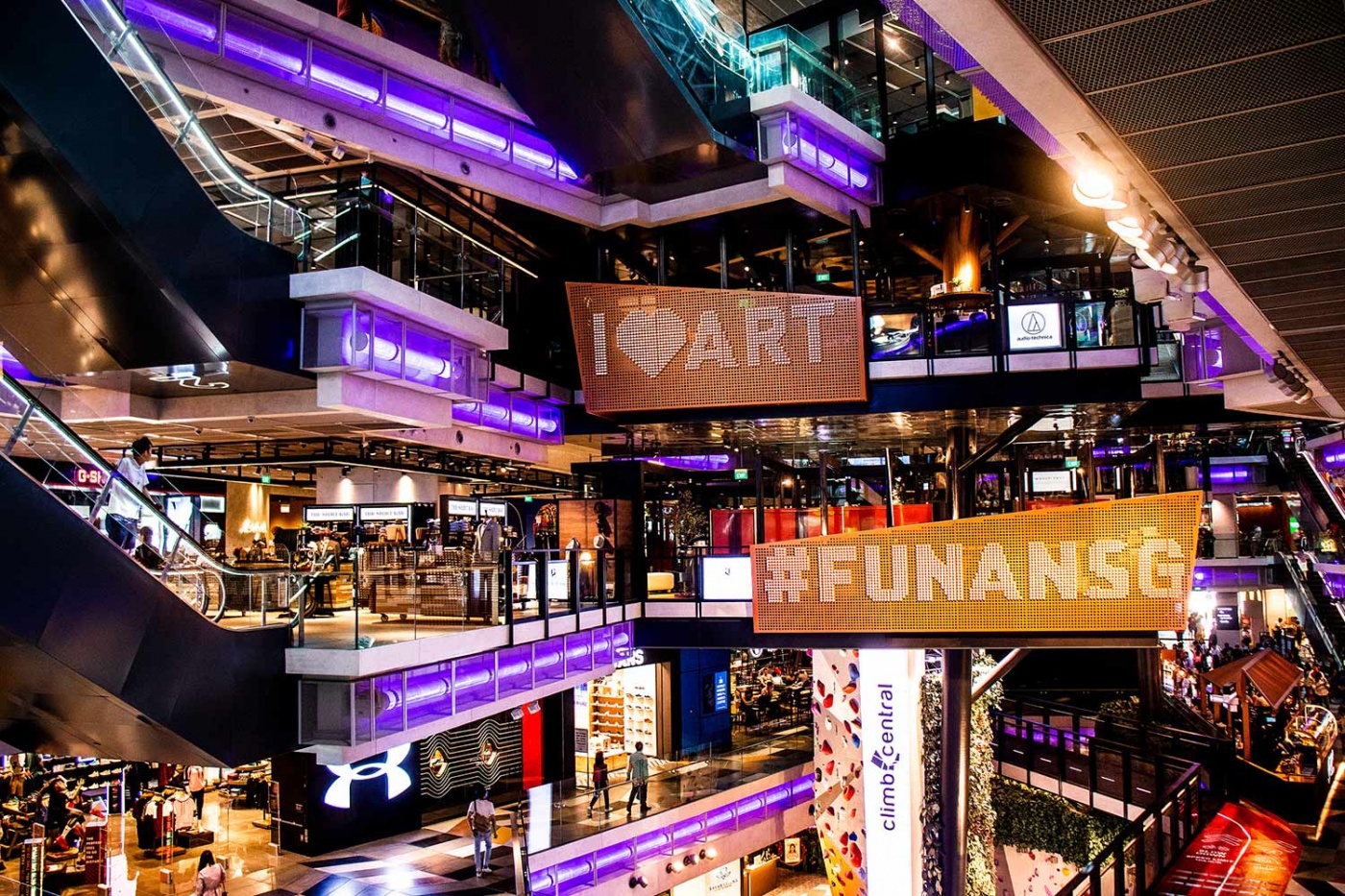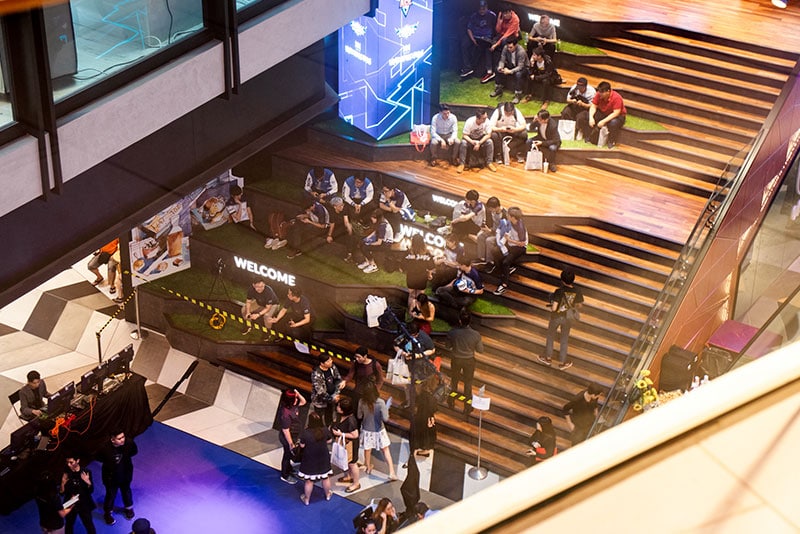Will Funan 2.0 Follow the Same Fate of Dying Shopping Malls?
I’ve always believed that shopping malls are the worst places to hang out in. They all look the same, and more or less carry the same stores. Built more for utility than anything else, people go to shopping malls to run errands, get their groceries and buy their dinners. The building itself isn’t the main attraction, considering that most of them lack character. Now that online shopping is on the rise, replacing the need to step out for retail therapy or even to stock up the pantry, malls are slowly losing relevance. Who wouldn’t want the convenience of making purchases at the comfort of our homes, where there aren’t throngs of inconsiderate strangers? While malls are struggling to get footfall, they might be phased out if they remain uninspiring, outdated edifices without anything new to offer.
That’s what’s been happening in the United States with many departmental stores and malls turning into ghost towns. Credit Suisse reported that a quarter of the existing malls in America are at risk of being shut down in the next couple of years. It wouldn’t be a surprise to find out Singapore might be suffering the same fate. Millennials and those younger also seem not to share the consumer habits and lifestyles of their parents. Instead of going to the mall, they’re heading to independent neighbourhood boutiques such as the not-so-hidden gems in Tiong Bahru and the shophouses in Haji Lane, where there are more local proprietors and one-of-a-kind products. In the heyday of shopping malls, sometime in the 1980s, people were doing the opposite—frequenting large retail centres to buy what they saw on TV, mostly international brands and franchises, killing the business of local mom-and-pop stores.
Malls used to be the epicentres of big cities, but people are getting bored. These homogeneous spaces are not quite the thriving hangout spots that they used to be anymore. Unveiled on June 28 this year after three years of renovation, the Funan DigitaLife Mall (formerly an IT-focused retail centre) has been given a $560 million facelift by CapitaLand. Attempting to make it a bastion for homegrown brands, it revives and refreshes the traditional mall, and puts local products, cafes and names on the forefront. In fact, more than 60% of its stores are local like Love, Bonito, Tiong Bahru Bakery, Nasty Cookie, Carrie K, PPP Coffee, All Would Envy, and Anothersole. Many of these boutiques started out online as well, have now gone physical.
The new Funan Mall also caters to the next generation of youths with tech-savvy features. For one, a 24-hour click-and-collect drive-through service will be launched by the end of 2019. In the meantime, you can skip the long queues and grab a bite at the tech-based Kopitiam food court, where you order food and make payments through stall-specific kiosks. All you need is to collect your queue number, return to your seat, and wait till you see your number on one of the multiple screens around the food court. Soon, customers can also pay with cryptocurrencies such as bitcoin, ethereum and creatanium.
On paper, it sounds like a foolproof plan, but will it really change the way we shop? Will Funan become the next big hotspot? Or is it all hype and zero longevity like Changi Airport’s Jewel, where many of its F&B stores have shortened their operating hours since its opening, due to insufficient patronage.
Walking into Funan 2.0, many adjectives come to mind—industrial, minimalist, Scandinavian—but there’s only one word to describe it. Trendy. Built for the Instagram era, it looks like every BTO apartment that’s been refurbished in the last five years. It’s a mix of dark and light wood, Scandi-style offerings, and edgy, black metal borders and railings. I’ve lost count of how many pink neon signs I encountered in the new building. The fashion boutiques seem to share a colour palette of pastel hues too. Yet, I can’t help but be attracted to each one of them. Situated in the CBD, it gets more yuppies and working professionals than tourists, and most of them congregate in F&B outlets on weekdays and weeknights. The other retailers get more attention on weekends, though most patrons are still generally more interested in trying new foods than window shopping for jeans, computers or stationery.
Jolin, a 20-year-old part-timer working at a pop-up store at Funan, confirms my observations, telling me she’d only come with friends for the food. Wong Kee Wanton Noodles, Sinpopo, PPP Coffee, Milksha, Workspace Espresso Bar, Saap Saap Thai, and A Gan Guo Kui are among the most populated at mid-day. One thing CapitaLand did right was to introduce more communal nooks in the mall, such as the mini atrium on the ground floor and the steps (doubling as public benches) that connect the four floors. At 4pm on a Thursday, it was packed with young’uns and a few cosplayers in attendance for an Esports Festival Asia event happening till 6pm. Each storey, especially the deeper you go into the mall, has a different feel. Basement One appears to conform to the generic mall, with Watsons, an NTUC supermarket, and a lineup F&B staples. The third floor is evidently the IT floor, while the first and second storeys seem more unconventional.
At a time when everything is available online, the key to reviving the tired, old mall is experiential shopping. Rather than simply selling a product, stores have to offer experiences that they can’t get at home. It could be Love, Bonito’s augmented reality walkway, or the talks and workshops it organises in-store every now and then. It could be PPP Coffee’s Experience Bar, where visitors can taste a range of coffee blends for free. It could even be Carrie K’s pearl bar, where guests can personalise and design their jewellery pieces. Funan’s Gong Cha also features a ball pit, while Golden Village includes virtual reality pods that customers can use and play games like Fruit Ninja and Job Simulator at $8 for 15 minutes. Still, how much of it adds to the shopping experience? Or are they simply marketing gimmicks? I don’t have to wait and see to know that no one’s going to use the basketball hoop in the middle of the ground floor, and risk injuring innocent bystanders. Likewise, the bicycle lane that runs through the mall, and can only be used from 7am to 10am, seems like a fruitless novelty. A security guard stationed at the entrance where the bike lane starts tells me he’s only seen one person use the lane so far. Enough said.
At 4:40pm, I hear a beeping sound and realise the escalators have stopped working. About half the stores are suffering from a power outage as well. This lasts about 10 minutes before it’s back to business. It seems this is the second time in a week that an electrical mishap has occurred. Whether it’s due to shoddy infrastructure or plain bad luck, no one seems to know. Similarly, it’s far too early to tell whether Funan’s newfound popularity will last, considering that it’s yet to roll out its click-and-collect service, and the new Wild Rice theatre. Until then, the hype will most likely prevail.





